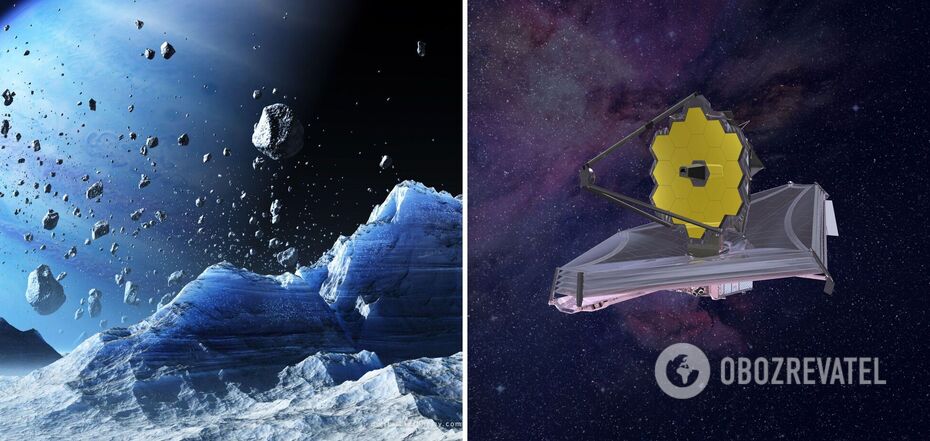Life
Why alien life can exist even on completely frozen planets: scientists have a clue
Hydrogen and oxygen are ranked first and third on the list of the most common elements in the universe. Accordingly, water may be much more common than we thought. Scientists are calling this good news for alien hunters.
Inverse reported on fresh research that shows that certain life forms can exist on exoplanets even with extremely low temperatures. Thus, scientists have found that the habitable zone (the area where the temperature allows water to be in the liquid state) around red dwarfs is being destroyed by stellar winds and strong radiation. They tear the planets' atmosphere off, turning them into bare irradiated rock. It is hard to imagine how life can exist there.
Scientists hope to get more data on this subject from the James Webb Telescope. Meanwhile, the available data advice not to judge the exoplanet on its frozen surface. We are talking about those celestial bodies that are far away from their stars and which do not reach the destructive radiation from starbursts. At the same time, this makes them too cold to have liquid water on the surface. If these worlds have water at all, it is probably ice, which is completely unfriendly to living organisms. However, scientists suggest that on average, one planet in each star system may have liquid water lurking beneath the surface.
"Our work shows that water can be found in places we haven't even considered. This greatly increases the chances of finding environments where life could theoretically evolve," Luendra Ojha, a planetary scientist at Rutgers University, told the paper. He recently presented his team's work on the topic during a geochemistry conference in France. They published a paper on the subject in Nature Communications journal.
What lies beneath the surface
Radioactive elements are a component of most rocky objects in space. When they decay, they release heat. Thus, the Earth's interior receives some of its heat from radioactive potassium, thorium and uranium, which decay deeply in the Earth's crust and mantle. It is radioactive elements that warmed rocky objects in the early solar system and did it so powerfully that they melted rock and metal.
Considering this fact, Ojha and his colleagues modeled how much heat an Earth-sized planet could generate in this way without using sunlight or tidal friction. It turned out to be much more than previously imagined. Calculations showed that this heat is enough to keep underground lakes or seas liquid.
Hidden oceans beneath the icy surface are not something new and exotic. Astronomers know that in our solar system, Saturn's satellite Enceladus and Jupiter's satellites, Europa and Ganymede, have oceans of liquid water spilling out beneath kilometers of icy crust. These natural satellites get a huge portion of their internal heat from the tides of the gas giants around which they orbit. But Ojha and his colleagues argue that heat from radioactive elements decaying in the planet's interior may contribute as well.
Even our planet proves it's possible. Lakes of cold but liquid water lie beneath the Arctic permafrost in parts of Canada and in the ice of Antarctica. Heat generated by radioactive elements in the Earth's crust keeps the water warm enough to keep it from freezing. There is even some evidence that this may currently be happening at the south pole of Mars, persuades Ojha.
Water and some salt
Of course, scientists do not claim that the presence of liquid water automatically indicates life. This substance is only one of many needed signs to turn chemistry into biology. Living organisms also need an energy source and a bunch of nutrients like electrolytes and phosphorus to exist. The planet also has to be lucky enough to have all the possible preconditions for the emergence of life converge on it just like on Earth. The lack of liquid water is the biggest and most obvious obstacle to the development of life.
However, we may never know if life exists beneath the icy surfaces of other planets. We can send exploration vehicles to search for life both past and present beneath the surface of Mars. We can also send probes to sample the oceans of Europa and Enceladus. But as for exoplanets from other star systems, all we can do today is look at them through a telescope. While life on a planet's surface may leave traces in its atmosphere, underground life is likely to remain completely hidden from Earthlings' eyes.
"The main challenge is to develop ways to detect these habitats with future telescopes," Abel Mendez, astronomer from the University of Puerto Rico said in a commentary on collegues' work.
As OBOZREVATEL reported, the Perseverance rover found new evidence in Jezero crater of organic molecules, which are a sign of life, to be present on Mars.
Subscribe to OBOZREVATEL's channels in Telegram, Viber and Threads to keep up with the latest news.



























